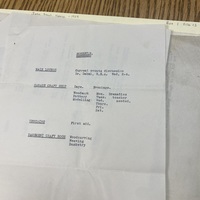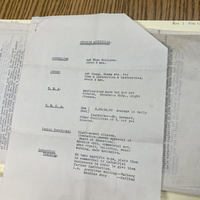John Frank's House
John Frank's House was a homeless shelter for young men established by Holy Trinity Church in Toronto in 1938. (6) John Frank’s House was created by the reverend of Holy Trinity Church, John Frank, and was first opened at Holy Trinity Parish Hall. (7) As word of John Frank’s House and its philanthropic deeds spread around Toronto, the Red Cross reached out to John Frank to donate a house for the shelter in Toronto. (8) On Christmas Eve, 1938, around 100 young men moved into John Frank’s House thanks to the donations of kind Torontonians and organisations such as the Red Cross and Holy Trinity Church. (9) John Frank’s House was created because the Federal, Provincial, and Municipal governments all refused to deal with the homelessness problem during the Great Depression and insisted that the problem was a personal matter to be solved and not a nationwide issue. (10) Many solicitous Torontonians such as John Frank, and journalist, Judith Robinson, could not sit back and watch thousands of young men become jobless and homeless and not receive any governmental assistance. Therefore John Frank’s House was created and such high amounts of support were given to it as an alternative solution to the homelessness issue in Toronto. (11) The mission of John Frank’s House was not just to serve as a typical homeless shelter by providing men with food and a place to sleep, but also as a place where men could become educated and learn skills to get jobs. Around 32% of the men at John Frank’s House never received an education past grade 4 and a few of them were illiterate or did not speak English. (12) The organisers at John Frank’s House realised that to help homeless men get stable jobs and remain off the streets, they must educate them and give them the opportunity to learn career skills. Listed below are documents from Judith Robinson’s fonds that detail various educational and vocational classes that the men could take at John Frank’s House.


